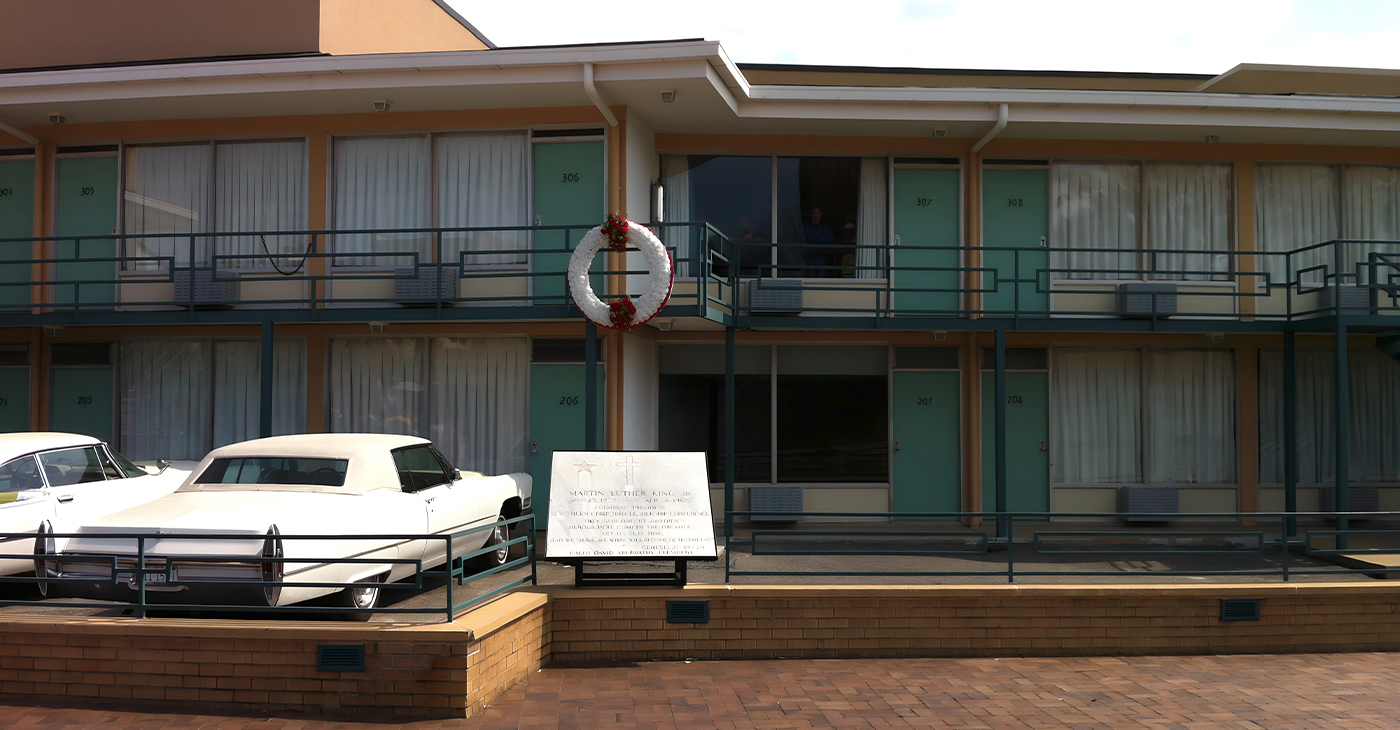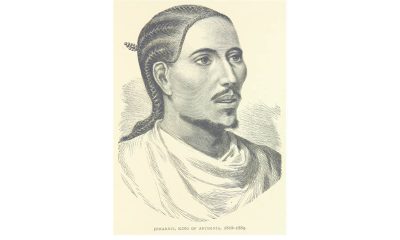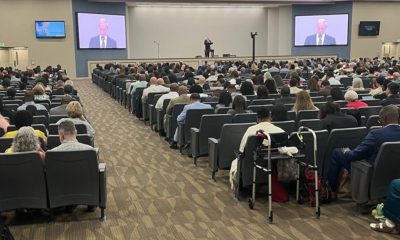Black History
Remembering 4/4/68
It was a time in America when white racial resentment was a critical factor in everyday life. Crowds of Blacks marched and boycotted, their voices demanding a future beyond blatantly illegal state and local racial practices in places like Birmingham and Selma and Greenwood and Montgomery.

By Tamara Shiloh
It was a time in America when white racial resentment was a critical factor in everyday life. Crowds of Blacks marched and boycotted, their voices demanding a future beyond blatantly illegal state and local racial practices in places like Birmingham and Selma and Greenwood and Montgomery.
But on the night of April 4, 1968, those voices turned to cries. Some gathered in homes, hovering around radios and TV sets. Some converged on churches, where they prayed through the night. And others, fueled by despair and disappointment, took to the streets.
Later dubbed the Holy Week Uprising, bricks and Molotov cocktails were thrown, and fires burned in more than 100 US cities including Chicago, Baltimore, Kansas City, and Washington D.C. Armed National Guardsman patrolled the streets of Wilmington, Del., with orders to end violence in the most impoverished neighborhoods. As the days passed, renewed violent unrest would take place in nearly 200 cities.
That was the evening Walter Cronkite made an announcement that shocked America and the world: “Dr. Martin Luther King Jr., civil rights leader and Nobel Prize winner, was shot and killed tonight in Memphis, Tenn.”
King, the man dubbed a savior by some and a communist by others, had been gunned down on the balcony of his room at the Lorraine Motel. He was rushed to St. Joseph’s Hospital, where he was pronounced dead within an hour. He was 39. No other news story during that time received as much coverage. King’s death became a topic of discussions for days to come.
“I remember Walter Cronkite coming on television, interrupting the program to announce that Dr. King had been shot and killed,” Robert Birt told TheAtlantic.com. “I remember my mother breaking down and crying on the sofa. I can remember, you know, waves of sorrow, anger welling up in my chest at that time.”
Vann R. Newkirk II, journalist and staff writer for The Atlantic, wrote: “It’s been over 50 years since then, but for many people, it feels like yesterday … Almost universally, when I talk to Black people who remember the assignation of Martin Luther King, they’re still wrestling with grief.”
On the morning of April 3, 1968, King took a flight from Atlanta to Memphis. He was “not in a particularly good state of mind,” NPR reported.
While the plane was about to take off, “there was a bomb threat that was specifically targeted at King and that delayed the departure of the flight,” according to author Joseph Rosenbloom. “They brought dogs onto the plane; they evacuated the passengers.” Although King was accustomed to receiving threats, this one, he thought, “might be a sign of something terrible to come.”
Some of King’s aides, Rosenbloom wrote, “said that they’ve never seen him more depressed than he was at that time.” King was certain that he was going to die, and soon. He was shot and killed 31 hours later.
Take a closer look at MLK’s final hours in Joseph Rosenbloom’s “Redemption: Martin Luther King Jr.’s Last 31 Hours.”
Activism
Oakland Post: Week of July 24 – 30, 2024
The printed Weekly Edition of the Oakland Post: Week of July 24 – 30, 2024

To enlarge your view of this issue, use the slider, magnifying glass icon or full page icon in the lower right corner of the browser window. ![]()
Activism
Oakland Post: Week of July 17 -23, 2024
The printed Weekly Edition of the Oakland Post: Week of July 17 -23, 2024

To enlarge your view of this issue, use the slider, magnifying glass icon or full page icon in the lower right corner of the browser window. ![]()
Black History
Betty Harris: Inventor of Spot Test That Revolutionized Chemical Detection
Our accomplishments never cease to amaze me. Imagine being a scientist who can detect hidden chemicals with just a simple test. Here’s another hidden gem. Dr. Betty Harris is a brilliant scientist and inventor known for her work in chemistry. She was born on July 29, 1940, in Louisiana. From a young age, Betty was fascinated by science. She loved to learn how things worked and always asked lots of questions. Her passion for science led her to become a chemist.

By Tamara Shiloh
Our accomplishments never cease to amaze me. Imagine being a scientist who can detect hidden chemicals with just a simple test. Here’s another hidden gem.
Dr. Betty Harris is a brilliant scientist and inventor known for her work in chemistry. She was born on July 29, 1940, in Louisiana. From a young age, Betty was fascinated by science. She loved to learn how things worked and always asked lots of questions. Her passion for science led her to become a chemist.
By 1961, aged just 19, she had graduated from Southern University in Baton Rouge with a chemistry degree.
She did her research at Los Alamos National Laboratory, New Mexico, where she worked in the areas of hazardous waste treatment and environmental remediation as well as explosives chemistry. Areas of focus included explosives detection, synthesis and characterization of insensitive high explosives and sensitivity of weathered high explosives.
Her invention, a spot test for TATB, represents a significant advancement in the detection of this crucial but stable explosive compound.
TATB stands for 1,3,5-triamino-2,4,6-trinitrobenzene. It’s a type of explosive that is very stable and safe to handle, making it important for various safety applications. TATB is used in explosives because it doesn’t explode easily under heat or shock, which means it’s safer to store and use.
Harris invented a special test called a “spot test” to detect TATB. Before her invention, finding TATB in materials was difficult and time-consuming. Her spot test made it quick and easy to detect this important chemical.
The spot test developed by Harris is a simple yet powerful method that involves a few straightforward steps. A small sample of the material in question is obtained. The sample is treated with a special chemical solution formulated by Harris. If TATB is present in the sample, the solution undergoes a color change, providing a clear and immediate indication of its presence.
Harris’s spot test is important for several reasons. The test helps ensure that explosives are safe to handle and store. By detecting TATB quickly, accidents can be prevented. It is easy to use and provides fast results, saving time and resources.
Inventions like Harris’s help science to progress by making it easier to work with important chemicals.
Her contributions extend beyond her scientific achievements. She is a passionate advocate for education and has been a mentor to countless young scientists, particularly encouraging girls and African American students to pursue careers in Science, Technology, Engineering and Math (STEM) fields.
Her dedication to fostering the next generation of scientists has earned her numerous accolades and respect in the academic community.
Harris still lives in New Mexico.
-

 Arts and Culture3 weeks ago
Arts and Culture3 weeks agoRooted in Tradition: The Intricate History of Black Hair Braiding
-

 Bay Area4 weeks ago
Bay Area4 weeks ago“I Will Not Be Bullied,” Says Oakland Mayor Sheng Thao
-

 Bay Area2 weeks ago
Bay Area2 weeks agoPG&E Increases Rates While Bay Area Households Are Struggling to Stay Afloat
-

 Business3 weeks ago
Business3 weeks agoGov Newsom: Raising Fast Food Minimum Wage to $20 Pays Off as Jobs Multiply in Industry
-

 Activism4 weeks ago
Activism4 weeks agoOpponents of Mayor Sheng Thao Are Calling on Her to Resign Following FBI Raid
-

 Bay Area2 weeks ago
Bay Area2 weeks agoJuneteenth Mass Shooting Suspect Charge with Multiple Counts of Felony Assault by Alameda County DA Pamela Price
-

 Community1 week ago
Community1 week agoHundreds Come to Jehovah’s Witnesses’ Assembly Hall for Three-Day Program of ‘Good News’ in Fremont
-

 Activism4 weeks ago
Activism4 weeks agoOakland Coliseum Sale to AASEG: A Model for Community Development and Inclusion





















































